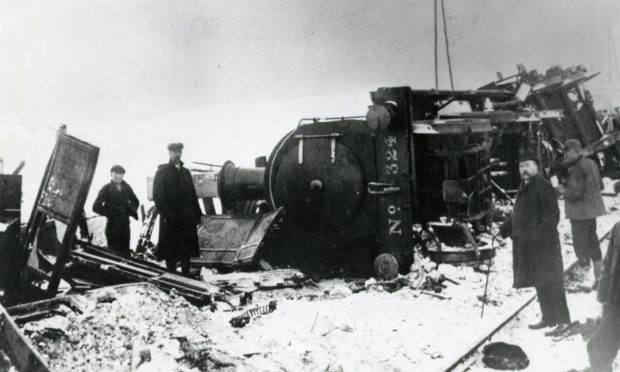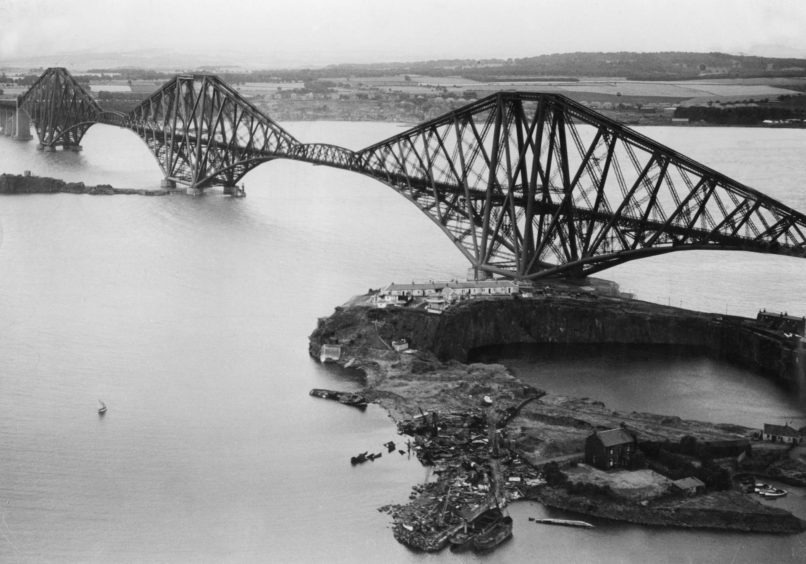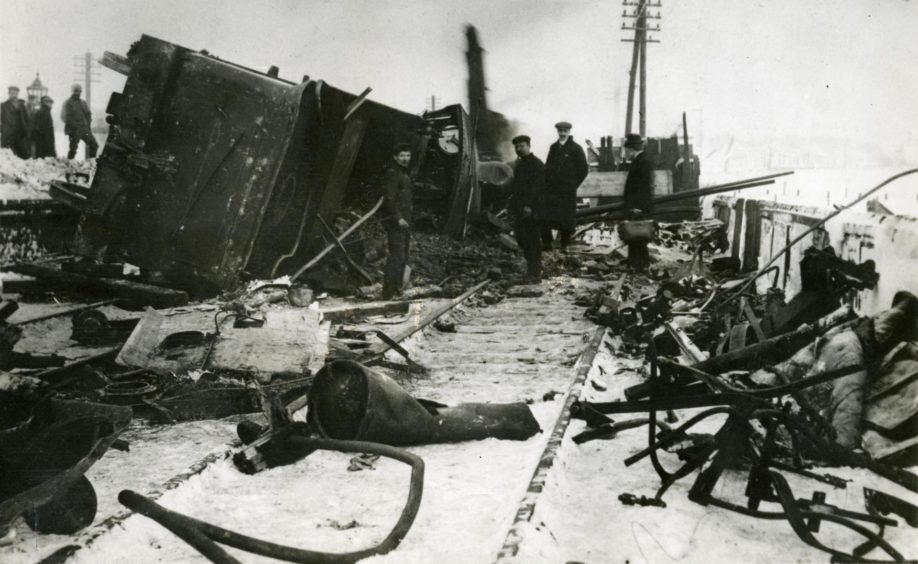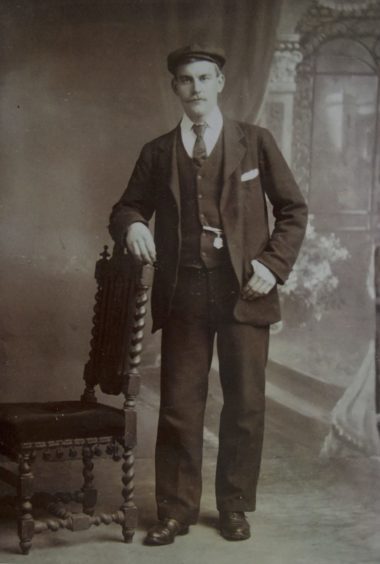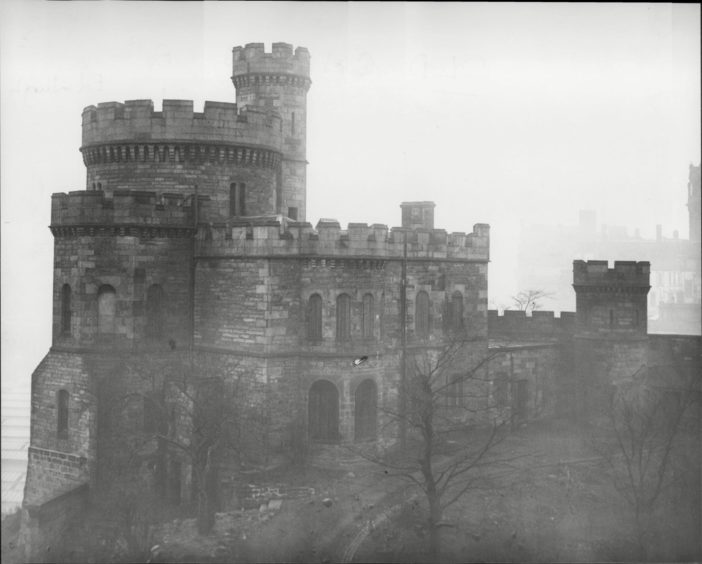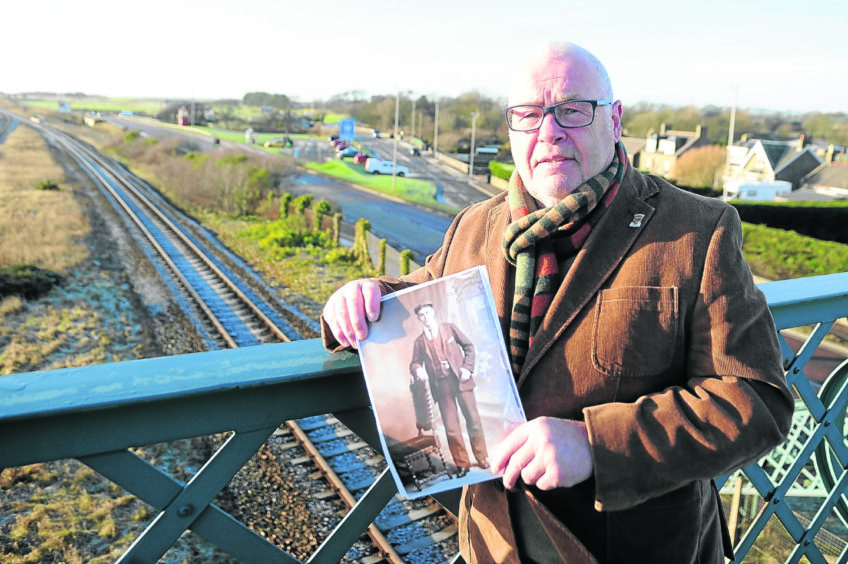The search is on for descendants of victims of a deadly rail crash which cast a dark shadow over Arbroath.
The accident happened on December 28 1906 when the Edinburgh-bound North British Express hit a stationary train at Elliot Junction station.
Thirteen people were killed instantly on the Caledonian Railway train but the death toll increased to 22 and the town’s drill hall was used as a temporary mortuary.
A planned website aims to tell the story of the disaster and remember those who died and the bravery of those who worked to save others.
A memorial stone will be mounted at the scene of the tragedy and organisers have set up a Facebook page to allow relatives of the deceased to get in touch.
Three factors led to the tragedy at Elliot Junction
Severe weather played a significant part in the disaster.
Heavy snow started falling on Boxing Day and continued for the next two days.
Angus was the worst affected area, suffering huge drifts, some 15 to 20 feet deep, which caused a total breakdown in communication and all forms of travel.
By Friday Arbroath was virtually cut off and all but one telegraph line into the town had been brought down by snow-loads.
At about 10.30am that morning, the North British Railway Company Edinburgh-Aberdeen Express finally arrived at Arbroath Station.
The route to the north was blocked and there was no question of it making its way to its intended destination.
Matters had been made worse when trucks from a local goods train left the track between Elliot and East Haven, restricting the railway to single line working.
However, because of problems with the telegraph line this information was not passed to the signal box at Arbroath.
By mid-afternoon, probably under strong pressure from disgruntled passengers, the decision was taken to send the Express back south to Edinburgh.
Because of the extreme weather it was decided to run it as a special train, stopping at each of the many local stations between Arbroath and Dundee.
Before the Express was sent off however, a local Caledonian Railway train, with most of the passengers sitting in the rear carriages because of the train’s position at the platform, had left Arbroath at approximately 3.15pm.
Unfortunately, the local train was forced to wait at Elliot Junction because of another train on the stretch of single line in use.
The Express left Arbroath at about 3.25pm.
Stationmaster John Grant told driver George Gourlay to go cautiously.
For a number of reasons, the locomotive pulling the Express was running tender first.
Driver failed to see the stationary train until it was too late
This meant that Gourlay was driving tender first into a blizzard, in reduced daylight, with snow and coal dust blowing in his face.
As the Express travelled towards Elliot the signals were in a drooping position because of the weight of the snow.
Nevertheless, the rules were quite clear in such a situation.
They should have been considered as danger signals.
The Express hurtled out of the snow storm at about 30mph and Mr Gourlay failed to see the stationary train until it was too late.
The Express ploughed into the rear of the Caledonian train and the overturned engine lay on it side.
Passengers took the initiative that day, tendering to the injured and removing bodies from the train.
A witness who saw the rail horror unfold from the platform, later told of the absolute silence that followed the collision.
Mr James Maiden of Logie Street, who had stepped off the train to stretch his legs, may have escaped the disaster but had to live with the memory of what he saw.
According to newspaper reports, Mr Maiden heard the roar of an engine and stood petrified as the North British Express came tearing through the snow.
“There was no screaming from passengers in the telescoped carriages,” he said.
“The overturned engine lay on it side, pistons till thrusting in the snow.
“The scene then came alive, from both trains passengers sprang and rushed to where the victims lay.”
Two men who had been in the vicinity of Elliot when the accident occurred ran to the town with the dreadful news.
Soon all the available medical staff and ambulances from Arbroath were on the scene and were faced with a scene of unimaginable carnage.
The final death toll was 22, with almost as many injured.
One of those injured in the crash was the Liberal Member of Parliament Alexander William Black, who died of his injuries shortly afterwards.
Arbroath football hero was a forgotten victim of the crash
Arbroath footballer David ‘Dev’ Cargill caught a chill while taking part in the rescue mission and died days later.
Mr Cargill has never been counted as one of the casualties.
He was a fisherman who also played both back and half-back for Arbroath and was described as an “invincible tackler” who “regards nothing as impossible”.
He played during one of Arbroath’s greatest seasons in 1898-1899 when the club won the Forfarshire Cup and narrowly lost out on the Dewar Shield.
During this period he was wanted by Everton and Dundee but with a new fishing boat on the horizon and longer hours spent at sea he started playing less and less.
Mr Cargill ran from his home in South Street to the Elliot Junction when word reached the town of the devastating rail disaster.
During his rescue efforts he was working amongst ice as well as a boiling hot train which gave him a serious chill and he subsequently died shortly afterwards.
Mr Cargill’s great, great nephew Jim Millar said survivors and those involved in the aftermath must have carried the memory of it for the rest of their lives.
“In addition to the local fatalities from Arbroath, Dundee and Carnoustie, others came from Hawick, Glasgow, Edinburgh and London,” he said.
“With a growing interest in genealogy, especially during lockdown, it may be that people researching their family tree have become aware they have a family connection to the tragedy.
“The incident saw a significant death toll, but we would like to go beyond that and tell their stories on a website dedicated to highlighting the disaster.
“For example, according to a contemporary report, two of those who lost their lives, Robert Coates and Alexander Coates from Edinburgh were father and son.
“John Wood, a newsboy from Arbroath, was just 18 years old when he died and I think these three cases highlight the human cost and family tragedy from the disaster which goes beyond simple numbers.”
What happened to the train driver David Gourlay?
Gourlay was scalded and his ear was sliced.
It took half an hour to release him but he escaped serious injury.
His fireman, Robert Irvine, had not been so lucky.
He was trapped by his legs beneath the 60-ton engine.
Those already on the scene were joined by others in an attempt to free the unfortunate Irvine but without proper lifting gear their efforts took several hours and it was about 11pm before he was finally freed.
Irvine had been conscious throughout his ordeal and able to speak to his rescuers but he had lost so much blood that he later died in Arbroath Infirmary.
Gourlay was arrested and charged on January 1 with “having driven the train in a reckless and culpable manner, whereby it came into contact with another passenger train and killed a number of passengers”.
The accident would become the subject of a Board of Trade enquiry, a public inquiry, and a High Court prosecution.
A five day public inquiry was held at Arbroath Courthouse before Sheriff James Ferguson in January 1907.
Sergeant John Alexander, of Forfarshire police, told the inquiry that passengers had informed him that Gourlay had been seen staggering about the Elliot platform.
While interviewing the driver he believed he could smell drink on his breath.
In his own evidence, Gourlay advised that he had been employed by the North British Railway Company for 47 years, 22 of them as a passenger driver.
During that time he had driven royal trains.
He said he visited the Victoria Bar beside Arbroath Station where a passenger treated him to a whisky.
Driver admitted taking a nip of whisky on the day
Just as he was leaving the bar another man offered him a glass (a double), which he refused, although he did take a nip of whisky.
Later, in the station, he was offered a drink from a passenger’s flask which he refused.
Other witnesses stated that they had seen Gourlay at Arbroath and they were of the opinion that he was not drunk.
After considering all of the evidence the jury at the inquiry decided Gourlay was at fault for not observing the instructions advising him to proceed carefully.
They also took the view that more could have been done by others, including the stationmasters at both Elliot and Arbroath.
The provision of danger signals on the line itself would also have helped prevent the accident, as would the availability of equipment to keep the track clear.
Following the inquiry, Gourlay went on trial at the High Court in Edinburgh on March 11 1907 on a culpable homicide indictment.
The Crown dropped 17 of the witnesses already cited including Sergeant Alexander because they had all spoken at the inquiry in Arbroath.
Gourlay was found guilty by 10 to five at the High Court, but due to his unblemished character, the weather and lax infrastructure, he was recommended for the upmost leniency and given five months in prison.
Although references to alcohol were made at the time of the public inquiry, it was found that the alcohol consumed was not a contributory factor, and the High Court verdict made no mention of the allegations that the driver had been intoxicated.
There was much public sympathy for the driver including a 98,000-signature petition and his sentence was reduced on appeal.
He was released after three months from Calton Jail, with 2,000 people waiting outside the gates of the prison to show their loyalty to him.
The North British Railway Company also showed their faith in Gourlay by retaining his services after his release.
Elliot crash is ‘very much part of Arbroath’s history’
Arbroath Independent councillor David Fairweather said: “Although this incident occurred more than a century ago, it is very much part of Arbroath’s history and I think it deserves a permanent memorial.
“We had hoped the project would have been completed last year, but the Covid-19 pandemic, among other challenges, has delayed it, but we are now in the final stages.
“A significant step forward was the very generous offer by local firm, the Geddes Group to supply a stone from one of their quarries.
“This means the memorial will be a fitting tribute to those who lost their lives in what remains one of the worst rail accidents in the UK.
“I would also like to thank council officers for their advice on taking the memorial forward.
“It may have occurred many years ago, but it is never too late to do the right thing.”
The project has consulted local councillors and parliamentarians on suitable wording, which will be engraved on a plaque and fixed to the memorial stone.
